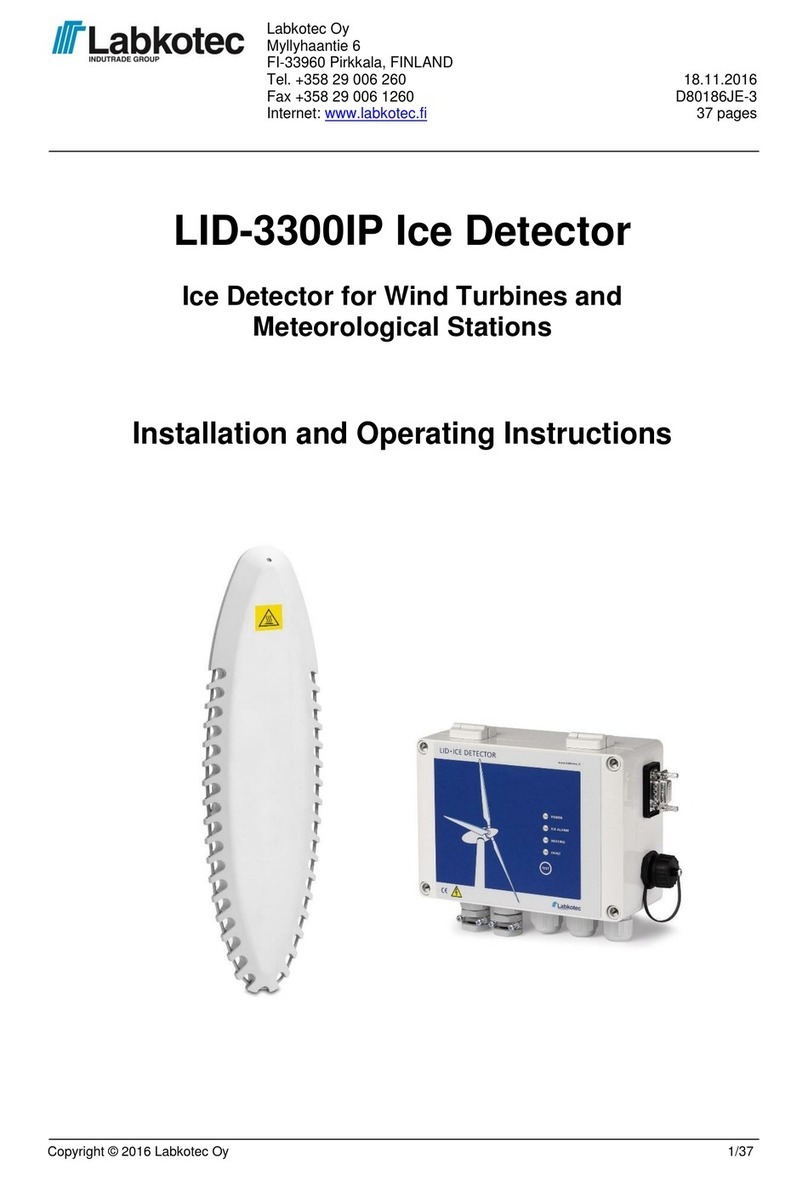LID-3300IP Type 2 Ice Detector DOC001181-EN-3
Installation and Operating Instructions
Copyright © 2020 Labkotec Oy 2/47
TABLE OF CONTENTS
ABOUT THIS MANUAL ............................................................................................ 4
SUMMARY OF CHANGES AND NEW FUNCTIONALITY....................................... 4
1PRODUCT OVERVIEW....................................................................................... 5
2INSTALLATION ................................................................................................... 6
2.1 Installation and interfaces of LID-3300IP Type 2 Control Unit..................... 6
2.2 Installation of LID/ISD Type 2 ice sensor..................................................... 6
2.3 Lightning protection...................................................................................... 8
3ELECTRICAL CONNECTIONS........................................................................... 9
3.1 Power supply.............................................................................................. 10
3.2 Connections between ice sensor and control unit ..................................... 10
3.3 Relay outputs............................................................................................. 11
3.3.1 Three-wire relay connection........................................................... 12
3.3.2 Two-wire relay connection............................................................. 13
3.4 Analog outputs........................................................................................... 14
3.5 Serial interfaces: RS-232 maintenance and optical fiber interface............ 14
3.5.1 RS-232 Terminal Settings.............................................................. 14
3.5.2 Serial Output - Streaming Mode Format........................................ 16
3.5.3 Serial Output –Measurement and Configuration Menu ................ 16
3.6 Ethernet interface....................................................................................... 19
4COMMISSIONING AND SYSTEM VALIDATION.............................................. 19
5LID-3300IP TYPE 2 ICE DETECTOR IN OPERATION .................................... 20
5.1 Operating modes........................................................................................ 20
5.2 Manual Ice alarm test................................................................................. 21
5.3 Manual sensor heating............................................................................... 21
5.4 LID-3300IP Type 2 Front Panel................................................................. 22
5.5 Use of different parameter settings............................................................ 22
6INTERNET WEB ACCESS................................................................................ 23
6.1 Web UI - Header........................................................................................ 24
6.2 Web UI –Status......................................................................................... 24
6.3 Web UI - Raw command input................................................................... 24
6.4 Web UI - Settings....................................................................................... 24
6.5 Direct Web Access between PC and LID .................................................. 27
7TECHNICAL SPECIFICATION.......................................................................... 29
8REPAIR AND SERVICE.................................................................................... 30
9MAINTENANCE................................................................................................. 30
10 FAULT STATES ................................................................................................ 32
11 INSTALLATION MODIFICATION...................................................................... 32
12 REPLACEMENT................................................................................................ 32
13 RECYCLING...................................................................................................... 32




























